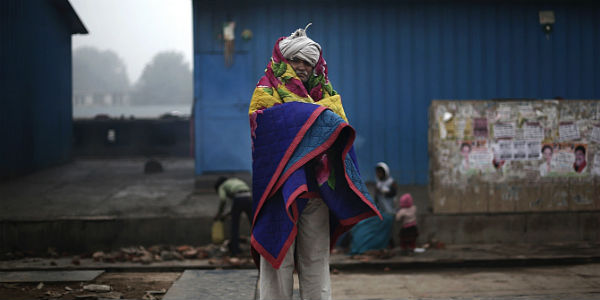 Winters in India are driven by two weather systems that affect the Northern hills as well as plains. One of them is the series of Western Disturbances which are responsible for bringing in rain and snow over the states of Jammu and Kashmir and bringing in the change in weather conditions across the region.
Winters in India are driven by two weather systems that affect the Northern hills as well as plains. One of them is the series of Western Disturbances which are responsible for bringing in rain and snow over the states of Jammu and Kashmir and bringing in the change in weather conditions across the region.
[yuzo_related]
These disturbances induce cyclonic circulations over Rajasthan, or Punjab and Haryana which result in rainfall activity over the plains of North India.
These weather systems are a cause of rain, snow and foggy conditions over the North Indian region. After the passage of these disturbances, temperatures also witness a steep drop resulting in chilly weather conditions.
For the past two-three years, bone-chilling winters have been escaping plains of North India. Those nail-biting temperatures, gloomy days, chilly winds are now becoming few. This season was no different, as the winter season kick-started on the same note. December remained warm throughout the month. Blame it all on the absence of winter rains from the region.
Winters in India are governed by the wind pattern and rain and snow activity over the hills of Jammu and Kashmir and Himachal Pradesh. According to weathermen, one only feels the actual taste of winters after the passage of any winter system.
Barring one major spell of rain and snow, December remained mainly dry throughout the month. Though there were series of Western Disturbances affecting Jammu and Kashmir but either they were feeble in nature or have been travelling in upper latitudes.
In fact, the absence of frequent and active Western Disturbances this season has resulted in cold nights and pleasant or even warm days.

Thus, with no major rain activity over the region, temperatures continued to settle on the higher side. Persistent dense to very dense fog also did not make an appearance, except on a few occasions. As a result, December was fairly warm, with average temperatures settling above normal.
Nothing changed during the beginning of the month of January too. However, the frequency of Western Disturbances increased this time. With this, the higher reaches of hills of North India recorded on and off rain and snow of varying intensity.
Although plains saw only one spell of rains around January 22-23, but the passage of these systems often led to cloud cover and change of wind pattern over the northwestern plains. However, as the systems moved away, chilly winds from the snow-clad Himalayas made way through the plains, leading to drop in mercury. Consequently, nights and mornings became chilly and days become slightly cooler yet comfortable.
As per the statistics, temperatures during January settled near the average range. Thus, people could at least manage to get the feel of famous winters during this month.
IMAGE CREDIT: Delhitourism.gov
Any information taken from here should be credited to skymetweather.com


